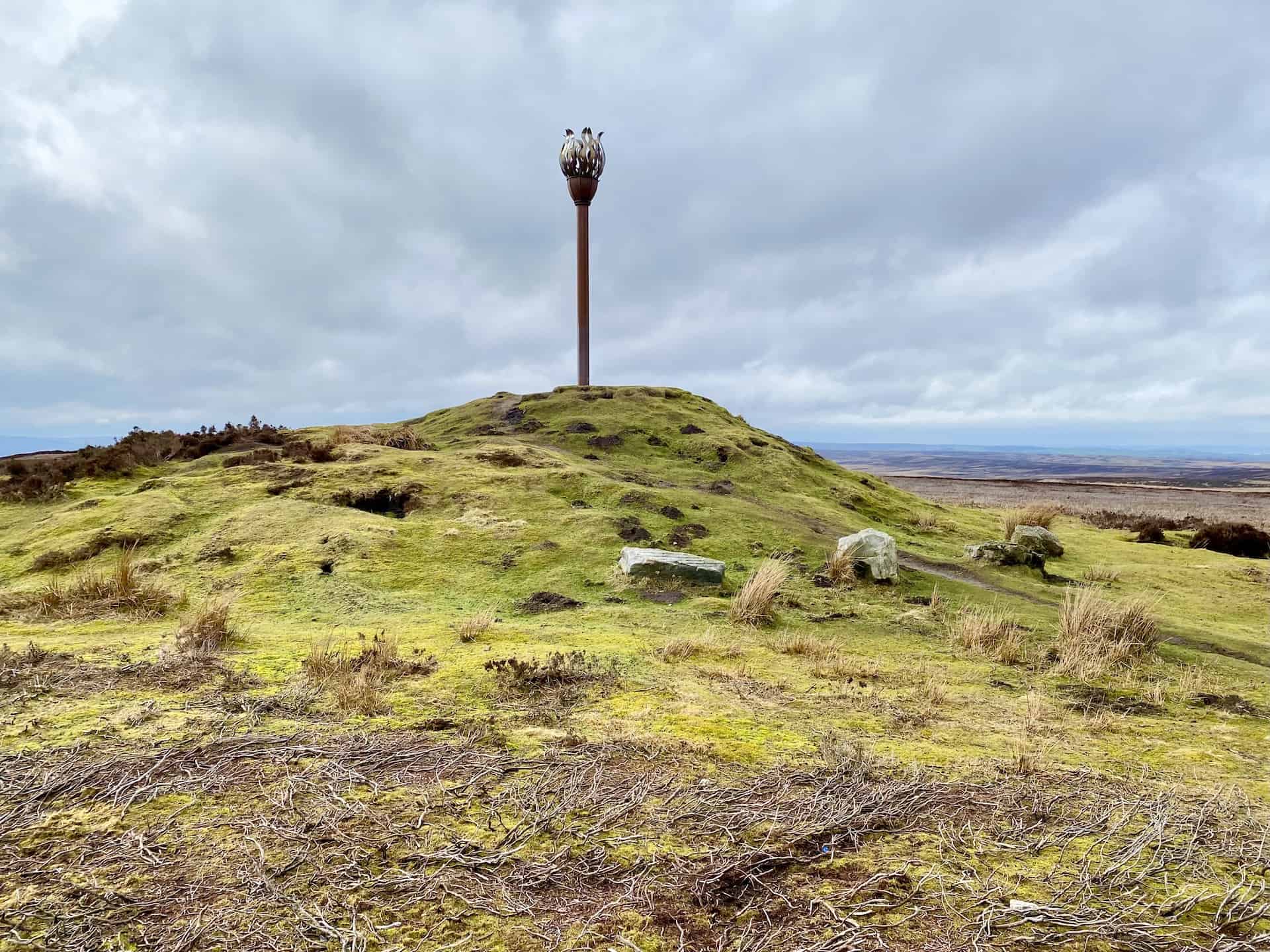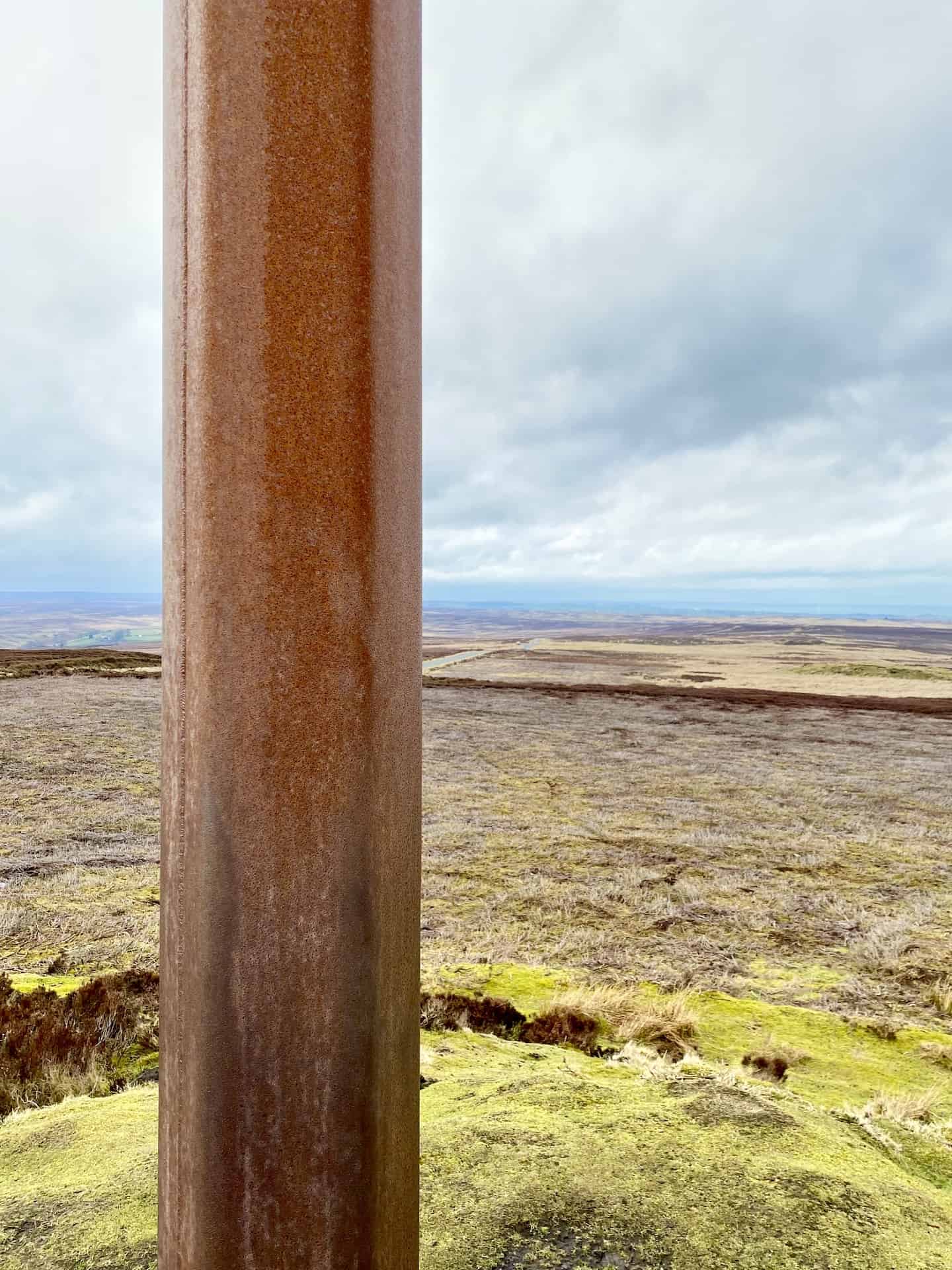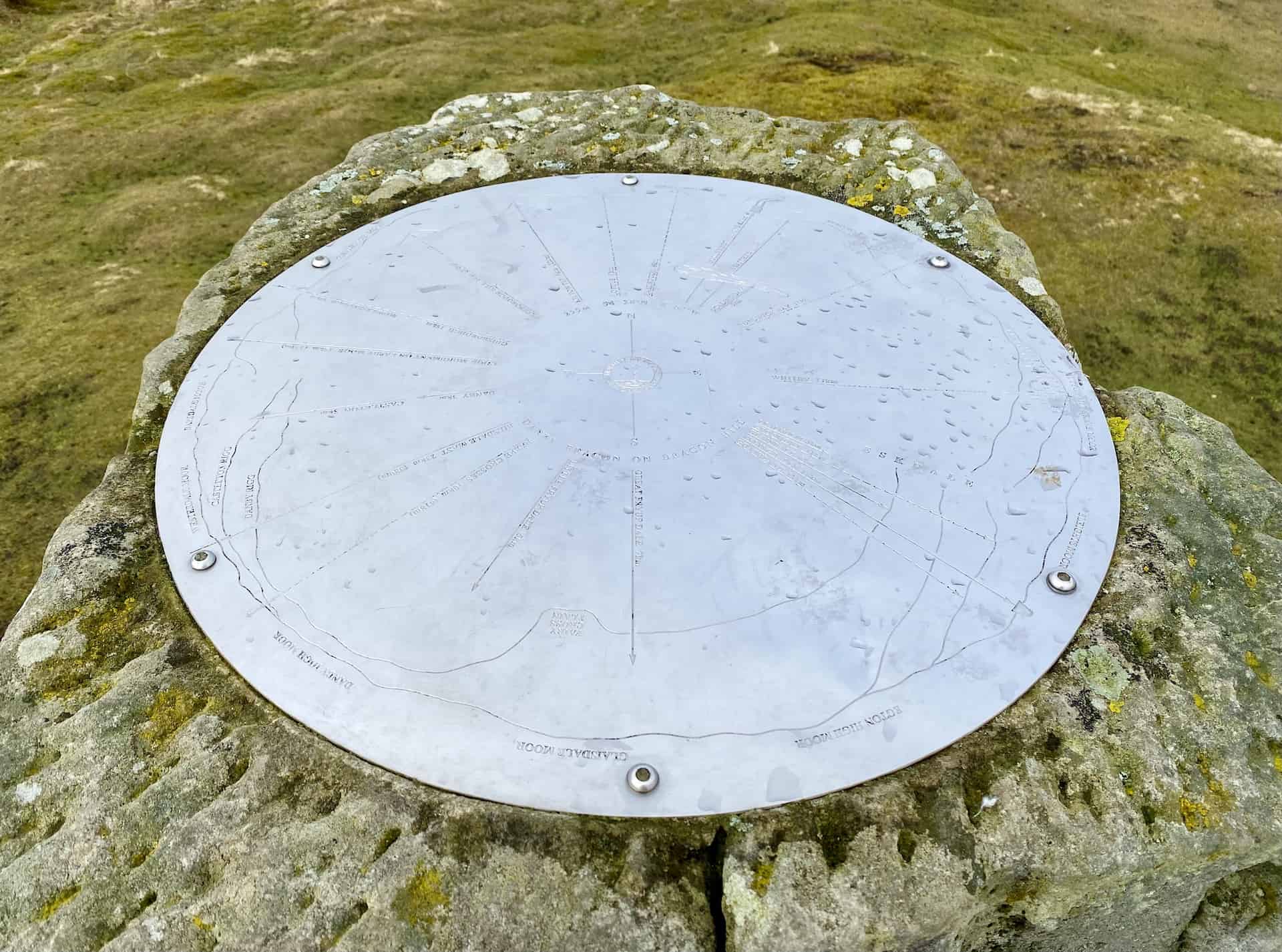The Remarkable Journey of Danby Beacon through the Ages
On Beacon Hill in the scenic North York Moors in North Yorkshire, Danby Beacon stands as a testament to England’s rich and diverse history. Serving as a crucial early warning system and communication tool, the beacon’s significance spans from Roman occupation to the Napoleonic era and the Second World War. Surrounded by picturesque villages like Danby and Lealholm, Danby Beacon’s story continues to captivate visitors and history enthusiasts alike.

Danby Beacon Location and Access Information
Danby Beacon is situated at Ordnance Survey grid reference NZ 736 093, between Danby Low Moor and Lealholm Moor. The beacon proudly overlooks the Esk Valley from the northern side, with the hamlet of Houlsyke directly to the south. Approximately 1.8 miles north-east of Danby and 2 miles north-west of Lealholm as the crow flies, both villages provide convenient access points.

The A171 Guisborough to Whitby road connects Danby, Lealholm, and Beacon Hill from the north. Travelling from the south, you can reach Danby from the A170 Helmsley to Pickering road at Kirkbymoorside, followed by a drive across Blakey Ridge which offers stunning views of the North York Moors, including Rosedale and Farndale. Ample parking is available near Danby Beacon. Additionally, the Esk Valley Walk passes right by the beacon making it accessible on foot from either Danby or Lealholm.
Significance in English History
Danby Beacon holds a prominent place in English history, serving as a vital early warning system and communication tool throughout various periods of conflict and upheaval. From the Roman occupation of Britain, King Edward III’s era and the Dutch Wars to the Jacobite Rebellion, the American War of Independence and the Napoleonic times, the beacon has played a crucial role in safeguarding England. Moreover, its involvement during the Second World War as a radar station showcases its enduring importance and adaptability throughout the centuries.
Early History of Danby Beacon
Beacon Systems in Britain
Throughout British history, beacon systems have been an essential means of communication and early warning. Employed since the Roman occupation of Britain, these strategically placed fire beacons enabled swift transmission of vital information over long distances. As tensions rose in 1346, King Edward III issued a proclamation to county sheriffs, ordering the lighting of beacons on high points and the assembly of the populace in case of a French invasion. Similar arrangements were enacted during the Dutch Wars in the 1660s, the Jacobite Rebellion in 1745, and the American War of Independence in the 1780s, highlighting the consistent value of beacon systems in safeguarding Britain.
Roman Occupation
Dating back to the Roman occupation of Britain, beacon systems have been an indispensable element of the nation’s communication and defence strategies. These early warning systems relied on lighting beacons of fire on high points across the land, facilitating the rapid dissemination of critical information. Serving both as a testament to Britain’s enduring fortitude and an integral part of its history, the use of beacon systems persisted and evolved throughout various eras of conflict and change.

King Edward III’s Proclamation
In 1346, amidst escalating tensions with France, King Edward III sought to fortify England’s defence by issuing a proclamation to the sheriffs of various counties. The royal decree mandated the lighting of beacons on high points as a means of early warning in the event of a French invasion. This pivotal moment in English history underscores the critical role of beacon systems in the nation’s security and the importance of preparedness during periods of potential conflict.
Use During the Dutch Wars, Jacobite Rebellion, and American War of Independence
Throughout the tumultuous periods of British history, beacons have remained a steadfast means of communication and early warning. During the Dutch Wars in the 1660s, the Jacobite Rebellion in 1745, and the American War of Independence in the 1780s, beacon systems were once again employed to bolster the nation’s defences. These pivotal moments highlight the enduring significance and adaptability of beacons, as they continued to serve as vital instruments in safeguarding England during times of conflict and uncertainty.

Danby Beacon During the Napoleonic Era
During the Napoleonic era, Danby Beacon played a vital role in England’s defence strategy. Evidence suggests that the beacon was active at this time, with its operation transitioning from civilian to military personnel. Army records reveal that a sergeant, accompanied by civilian watchers, was responsible for manning the beacon. Wood and tar were used as fuel, ensuring that, when lit, the beacon would produce dense, black smoke visible during daylight hours. As a key component of the nation’s early warning system, Danby Beacon reflects the importance of readiness and resilience during times of heightened conflict.
The Second World War and the Role of Danby Beacon
Development of Radar Technology
The advent of radar technology in the 1930s marked a significant turning point in the realm of early warning systems and communication. Following the successful demonstration of radio waves’ potential for aircraft detection in 1935, radar stations were rapidly developed, including at Danby Beacon in 1937. As part of the ‘Chain Home’ network of stations protecting the British Isles, the incorporation of radar technology at Danby Beacon highlights the continuous evolution of early warning systems, embracing innovation and progress in response to the ever-changing landscape of defence and security.
First Enemy Aircraft Shot Down Over the British Isles
A significant event in the history of Danby Beacon’s radar station occurred on the 3rd of February, 1940, when its signal interpreters played a pivotal role in guiding Flight Lieutenant Peter Townsend to intercept and shoot down the first enemy aircraft over the British Isles during the Second World War. The downed aircraft crash-landed just north of Sleights, marking a critical moment in the conflict. This event underscores the value of Danby Beacon’s radar station, as well as the tireless dedication and skill of the men and women who served there in defence of their homeland.

The Women Behind the Radar
The unsung heroes of the radar stations, including Danby Beacon, were the female operators whose innate multi-tasking abilities proved invaluable in the accurate interpretation of radar signals. These skilled women adeptly balanced the tasks of monitoring received signals, adjusting the transmitted signal for optimal results, and guiding RAF pilots to incoming enemy aircraft. Their proficiency in these crucial roles contributed significantly to the war effort, saving countless lives and demonstrating the vital contributions made by women in the defence of the British Isles during times of conflict.
Site Divisions and Facilities
The Danby Beacon radar station was strategically organised into two distinct areas to accommodate both operational and residential needs. Site A, located near the beacon pole, housed the towers, operating equipment, and generators essential for the station’s functioning. Site B, situated on Poverty Hill, provided barracks for the personnel working at the radar station. Between these two sites, a cinema offered a recreational space for the staff. After serving as a radar base during the Second World War, the facility continued in operation until its decommissioning in 1954, with the radar station remaining functional until the 1960s.

Decommissioning in the 1950s
Despite its closure, the legacy of the radar station remains preserved in local memory and history. For those interested in delving further into the stories and experiences of the early warning station during the Second World War and beyond, a folder containing valuable information is available for viewing at the Danby Lodge National Park Visitors Centre.
The Modern Era and the Rebirth of Danby Beacon
Loss of the Original Wooden Beacon
Over the years, the original wooden Danby Beacon succumbed to the ravages of time. Eventually, the ageing structure disintegrated and fell, leaving the site bereft of its iconic landmark. Recognising the importance of the beacon to both the local community and visitors, efforts were made to design and install a new beacon that would celebrate Danby’s heritage and create a symbol that resonated with the area’s identity.
Community Engagement and the Danby Beacon Trust
In January 2004, the Danby Beacon Trust was established to facilitate the construction and installation of a new beacon. The Trust involved the local community in its efforts, engaging them in discussions about the project and incorporating their views on the design. Many people participated in fundraising events, such as dances, fashion shows, and other activities, demonstrating the community’s commitment to the project. The Trust also secured planning permission and raised funds through grants and sponsors to ensure the successful completion of the new Danby Beacon.
Design and Construction of the New Danby Beacon
The design of the new Danby Beacon was carefully considered, with local opinions playing a significant role in the decision-making process. The community expressed a desire for a contemporary symbol that would celebrate the history and uniqueness of Danby and its surrounding area.

Great attention was paid to selecting materials that harmonised with the landscape. The column was constructed of corten metal, a type of steel that, over time, develops a patina reflecting the colours of the moorland. The flame-shaped basket was crafted from blued stainless steel, blending seamlessly with the sky. The flames surround a cup adorned with bronze, a nod to the Bronze Age burial mound partially occupying the site.

The beacon was designed by Don Watt and manufactured by M & C Construction of Middlesbrough under the supervision of Brian Gilbraith, the project’s engineer who also worked on the Angel of the North. Standing at an impressive 5.5 metres high, the new Danby Beacon proudly symbolises the history and heritage of the parish.

Danby Beacon Inauguration and Lightings
On the 22nd of October 2008, an audience of over 200 people gathered and braved the elements to witness Lord Downe, President of the Danby Beacon Trust, ignite the beacon. This ceremony not only marked the inauguration of the new structure but also commemorated Nelson’s victory at the Battle of Trafalgar on the 21st of October, 1805.
Today, the Danby Beacon Trust, composed of volunteers from the local area and the Dawnay Estate, organises the lighting of the beacon for various occasions, be they private functions or national events. By attending to the occasional maintenance required, the Trust ensures that this historic site is preserved for present and future generations to appreciate and enjoy.
Points of Interest at Danby Beacon
Triangulation Pillar
At the top of Beacon Hill, at a height of 299 metres (981 feet), is a triangulation pillar, or trig point. These concrete pillars, commonly seen in the United Kingdom, were historically used by surveyors to aid in the precise mapping of the country.

Toposcope and Centenary Plaque
A toposcope stands on the hill on a concrete block. Toposcopes are typically found at elevated vantage points, such as hills or summits. Their primary function is to identify and label prominent landmarks visible from that specific location. Often constructed of durable materials, such as metal or stone, toposcopes feature a circular or semi-circular dial inscribed with the names of the visible landmarks, accompanied by the bearings and sometimes distances to each point of interest.


Also attached to the concrete block is a commemorative plaque which reads:
DANBY PARISH COUNCIL 1894-1994
To celebrate their centenary year
this viewfinder was erected by the
Parish Council with assistance from the
North York Moors National Park Authority
It was unveiled by Lord and Lady Downe
on 22nd October 1994

This plaque honours the centenary of Danby Parish Council and highlights the collaborative effort between the council and the North York Moors National Park Authority to install the toposcope.
A Recap of the Historical Significance of Danby Beacon
Danby Beacon holds a distinguished position in England’s history, embodying a legacy of vigilance and defence throughout the centuries. From its origins as a fire beacon during the Roman occupation to its critical role during the Napoleonic era, the beacon has demonstrated its enduring significance as an early warning system. With the advent of radar technology, Danby Beacon evolved into a vital component of the Chain Home system during World War II, guiding pilots such as Peter Townsend to crucial victories. Today, as a restored landmark overseen by the Danby Beacon Trust, the beacon stands as a powerful symbol of the region’s rich heritage, reminding visitors and locals alike of its multifaceted role in England’s storied past.

Amazon’s Top Walking Boots: Four Standout Choices for Men and Women
For walking and hiking, the right boots are essential for both comfort and safety. While Amazon boasts a wide range, certain boots emerge as top-sellers. From those, here are four I personally favour. As an Amazon affiliate, I may earn a small commission from any purchases made through the links provided. This helps support the upkeep of this website. Rest assured, you won’t pay a penny extra, but your purchase will contribute to keeping my site running smoothly. Happy walking!

Berghaus Men’s Hillmaster II Gore-Tex Walking Boots
These fully waterproof leather walking boots feature a Gore-Tex lining, ensuring no water enters whilst allowing feet to breathe and stay cool. Made from full-grain leather, they promise unmatched durability and comfort. The boots come with memory foam tongues and cuffs that mould to your feet for a tailored fit, and the Vibram Hillmaster outsoles offer confidence on challenging terrains.

Salewa Men’s Mountain Trainer Mid Gore-Tex Walking Boots
Made from durable suede and abrasion-resistant textile, these men’s hiking boots are both lightweight and sturdy. The upper material is enhanced by a 360° full rubber sheath. Their dual-layer midsole with Bilight technology ensures ergonomic cushioning and grip, especially on extended hikes. The Vibram Wrapping Thread Combi outsoles allow a natural walking feel, and the Gore-Tex lining provides waterproofing, breathability, and optimal weather protection. Furthermore, the patented Salewa 3F system ensures flexibility, a secure heel grip, and a blister-free fit.

Berghaus Women’s Supalite II Gore-Tex Walking Boots
Specially designed for women, these hiking boots offer waterproofing and breathability, thanks to their Gore-Tex lining. Crafted from full-grain abrasion-resistant leather, they’re durable enough for the toughest hikes. The Supalite soles ensure stability and traction, and the EVA midsoles add comfort for extended walks.

Merrell Women’s Moab 3 Mid Gore-Tex Walking Boots
These hiking boots incorporate a Gore-Tex waterproof membrane, blending breathability with superior waterproof performance. The combination of pigskin leather and mesh on the uppers, along with the suede outer material, ensure durability and style. Enhancements include 100% recycled laces, webbing, and mesh lining. Additionally, bellows tongues, protective toe caps, and Vibram TC5+ rubber soles ensure protection and ease on any terrain.